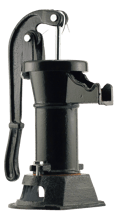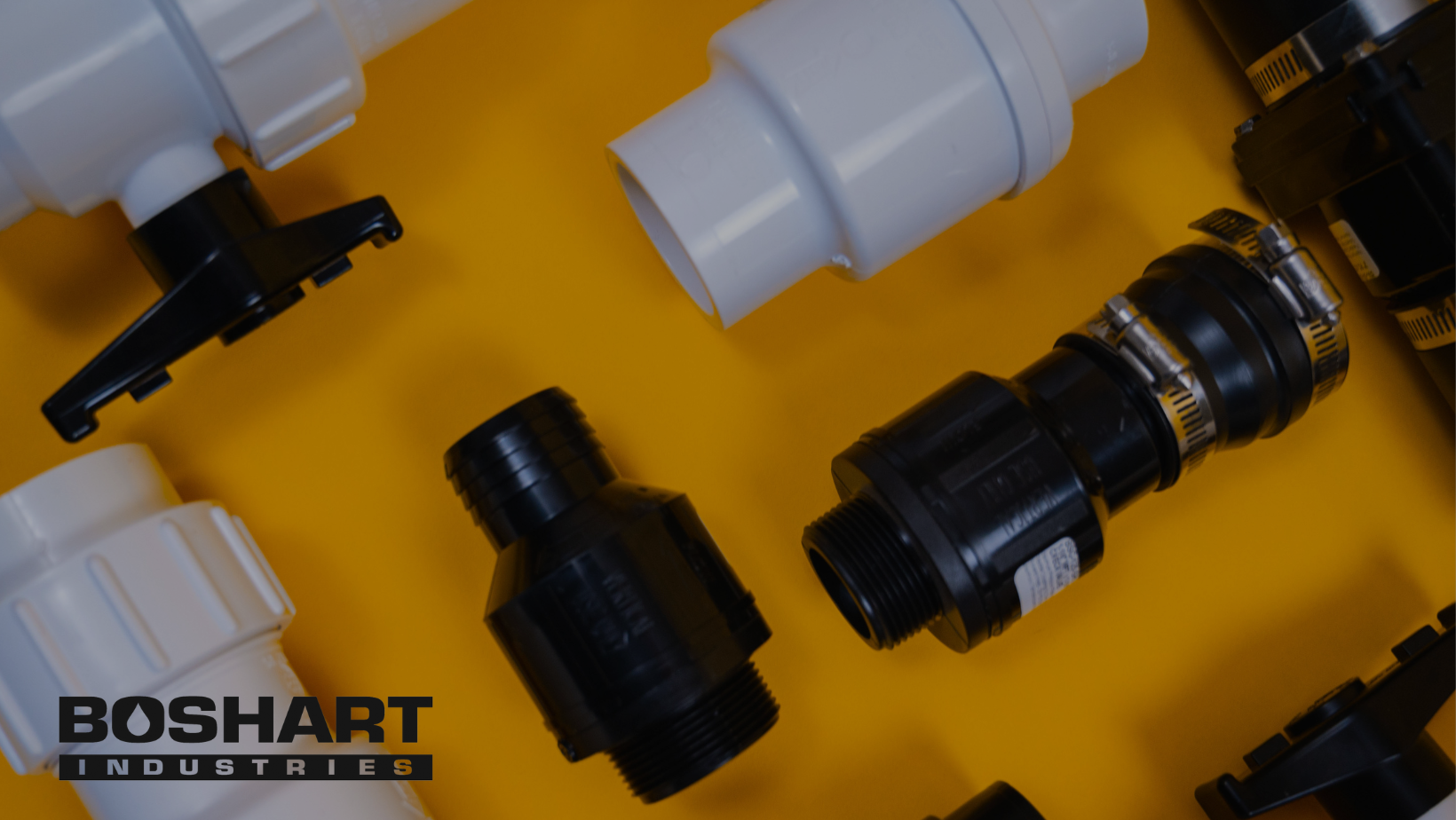Hand Pumps, also known as pitchers are both practical and decorative, making them great additions to any home. Hand pumps come in handy for back up during power outages, but are also used to add a finishing touch to any fountain or garden display.
In this post, we explore everything you need to know about hand pumps. We will take a look at both shallow and deep well hand pumps and go through important notes when working with hand pumps. Let's dive in.
Shallow Well & Deep Well Hand Pumps
 Hand pumps are available for shallow well and deep well applications. The hand pump on the left is specially designed for shallow well pumps and can lift water from depths up to 25 feet. The pumping mechanism is in the pump cylinder and pulls water up by creating suction. Deep well hand pumps can lift water from depths greater than 25 feet. The deep well hand pumps accomplish this by lowering the pumping mechanism into the well. When the pumping mechanism is in the water, there is no need for suction.
Hand pumps are available for shallow well and deep well applications. The hand pump on the left is specially designed for shallow well pumps and can lift water from depths up to 25 feet. The pumping mechanism is in the pump cylinder and pulls water up by creating suction. Deep well hand pumps can lift water from depths greater than 25 feet. The deep well hand pumps accomplish this by lowering the pumping mechanism into the well. When the pumping mechanism is in the water, there is no need for suction.
Shallow Well Hand Pump
The shallow well hand pump is not a new design, the construction dates back more than 100 years. There are two key internal working components in the pump that make it function; the flapper valve at the bottom of the pump and the cup leather/plunger valve that is connected to the handle. When the handle is pushed down, the cup leather and plunger are lifted. A vacuum develops in the cylinder and water is drawn into the drop pipe. After moving the handle up and down enough to bring water up to the pump, the water will get trapped in the cylinder above the flapper valve. The trapped water will force the plunger valve to open as it’s lowered and the water will enter the upper part of the cylinder. Lowering the handle again lifts the cup leather and brings the water up and out of the spout.
A constant pumping of the hand pump handle creates a continuous water flow at a rate of roughly 1 gallon every 10 strokes.
The shallow well hand pump will draw from a water level of 25 feet or less from the bottom of the pump. You measure the distance vertically from the spout to the water level where the water is being pulled from. An important note to keep in mind is that as elevation increases, atmospheric pressure decreases and you will need to deduct 1 foot from the maximum draw depth for every 1000 feet elevation above sea level. An additional 1 foot is removed from the maximum draw depth for every 50 feet of horizontal drop pipe. Shallow well hand pumps can be installed on a well, barrel or holding tank.
Drop Pipe
The piping that attaches to the bottom of the hand pump is the drop pipe and it reaches into the water source. The drop pipe can be made from PVC, polyethylene, galvanized steel, copper or any other drinking water acceptable pipe. For optimal water flow, the drop pipe should be no smaller than 1 1/4" pipe. If 1" pipe is used, it will decrease the amount of water volume pumped through the spout.
Key Note: Drop pipe should be at least 5 feet longer than the water pumping level to allow for changes in the well water levels.
Operating the Hand Pump
It is important to remember to never operate the hand pump without water to eliminate damage to the leather cup inside the hand pump. You should always fill the pump with water before operating, this  process is called priming the pump. You can prime the pump by pouring water into the top of the pump until the water flows out the spout. Allow 4 to 5 minutes for the leather cup to swell enough that it makes contact with the pump wall. Using small motions, raise and lower the handle until the suction pipe is full with water. If necessary, you can add more water at this time. If the pump will not prime properly, you should check for any leaks on the suction side.
process is called priming the pump. You can prime the pump by pouring water into the top of the pump until the water flows out the spout. Allow 4 to 5 minutes for the leather cup to swell enough that it makes contact with the pump wall. Using small motions, raise and lower the handle until the suction pipe is full with water. If necessary, you can add more water at this time. If the pump will not prime properly, you should check for any leaks on the suction side.
If a foot valve is included, it eliminates the need to prime the pump as the foot valve will keep water in the drop pipe. However, if there is a possibility of freezing then the pump will need to be removed from the water source during the cold seasons. Another option is to remove the foot valve and keep the handle of the pump in the up position, normally tied up as high as possible to cause the pump to drain on its own. When the handle is lifted, the plunger valve opens and the check valve becomes tilted as the plunger is forced down on top of the leather flapper weight. This allows for air to enter the suction line to break the vacuum and drain the suction line.
Hand pumps do make nice garden decorations, but they also play a vital role as a back-up in case of power outages or other emergency situations. Be sure to keep in mind the important operating notes to ensure the hand pump is being used correctly and to its ultimate potential.
Have further questions about this subject?

Head over to Boshart's Knowledge Base: technical product information, guidelines, and more.


.png)

.jpg)
SHARE